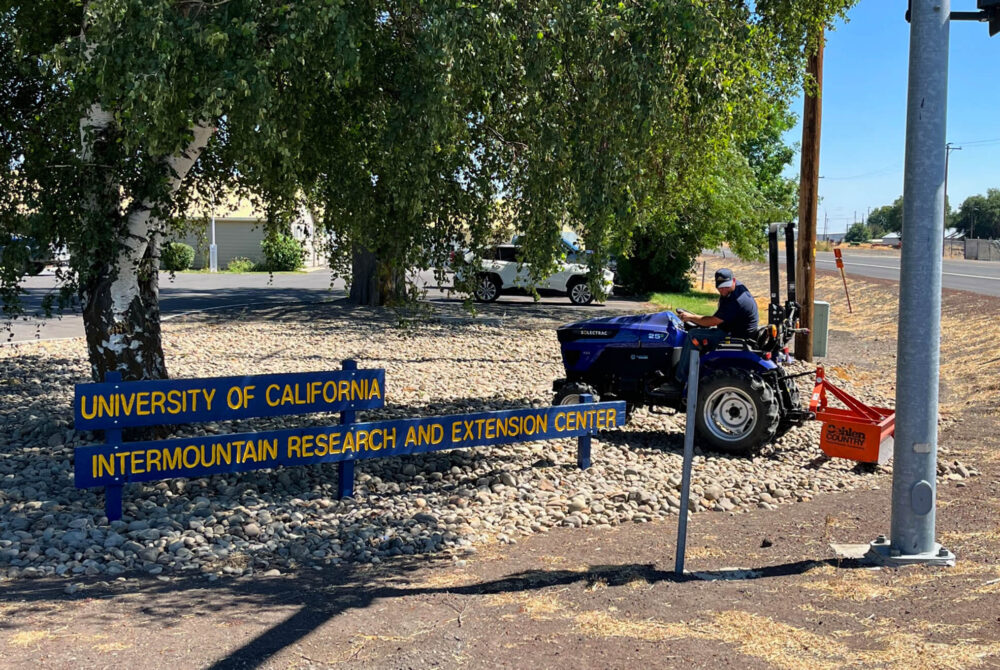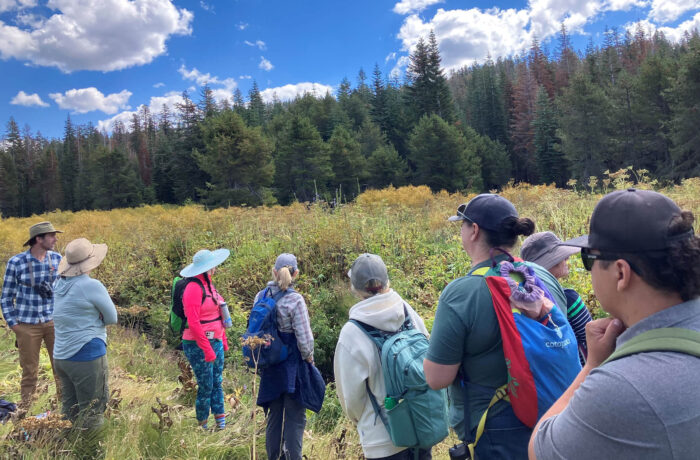UC Agriculture and Natural Resources (UC ANR) delivers the land grant mission for UC and California by developing and promoting practical, science-based solutions for the state’s food systems, water resources and natural ecosystems.
UC ANR’s statewide facilities — including nine Research and Extension Centers (RECs), the Elkus Ranch Environmental Education Center and an administrative building — continued sustainable practices in fiscal year 2022–23.
Read More about Sustainability at UC Agriculture and Natural Resources
Between 2022 and 2023, UC ANR’s facilities reduced carbon dioxide emissions from 1,266 to 979 metric tons and reduced natural gas use 4% by improving facilities’ energy efficiency and encouraging a reduction in employees’ overall energy use. In fiscal year 2022–23, potable water consumption decreased from the prior year, from 20.5 million gallons to 18 million gallons. This was largely due to the relocation of the Hansen REC: research concluded at the former site in 2022 and will ramp up at the new site in 2023.
While electricity use increased by 62%, overall indirect greenhouse gas emissions decreased by 52% as UC ANR transitions to purchased carbon-free electricity through UC’s Clean Power Program. Several factors impacted electricity use. UC ANR facilities store temperature-sensitive crops and research materials. With hotter weather, more energy is required to keep them — as well as employees — cool. Additionally, as of June 2023, UC ANR hired 60 additional academic staff with plans to recruit another 95 personnel. More people are accessing facilities. That said, new hires also expand UC ANR’s capacity to conduct research and outreach to support sustainable transitions.
CLIMATE PROTECTION – EMISSIONS
* Interim goals for 2030, 2035 and 2040 to be developed through fossil-free planning that is underway at each location
** 90% direct reduction of total emissions from 2019 levels with residual emissions negated by carbon removal
UC ANR hired 60 additional academic and staff personnel in order to increase its capacity to conduct research and outreach. In addition to this additional staffing, other factors that impacted the increase of electricity use included hotter weather, which required more energy to keep temperature-sensitive crops and research materials, as well as employees, cool. UC ANR decreased its scope 2 emissions by 52% due to the associated transition to purchased carbon-free electricity through UC’s Clean Power Program.
ENERGY – RENEWABLE energy use
ENERGY USE INTENSITY (EUI)
UC ANR saw an increase in its EUI in 2022.
Green building
UC ANR did not add any new LEED certified buildings but still maintains certification for its headquarters on Second Street in Davis.
1 Certified
Total number of LEED certifications
Transportation
EV charging ports
Although it is often not feasible for UC ANR to purchase or lease electric or hybrid vehicles (given the need for pickup trucks that are not yet available in those models), when possible, UC ANR purchases or leases flex-fuel vehicles, which use alternative fuel. As the industry makes more electric or hybrid vehicles available, UC ANR is committed to replacing vehicles with these models.
Water
Potable water use decreased by 2 million gallons because one research and extension center moved. As this center transitions to its new location, research will gradually ramp back up.

gallons of water used in 2023
Awards
A full list of awards is featured on the UC Office of the President’s website.
 Sustainability Annual Report 2023
Sustainability Annual Report 2023

